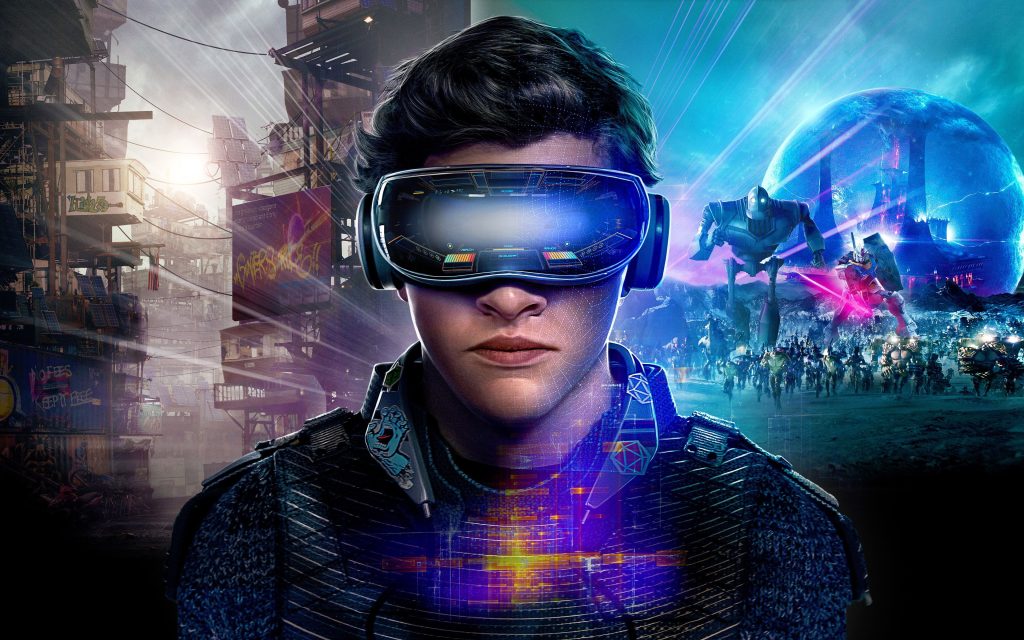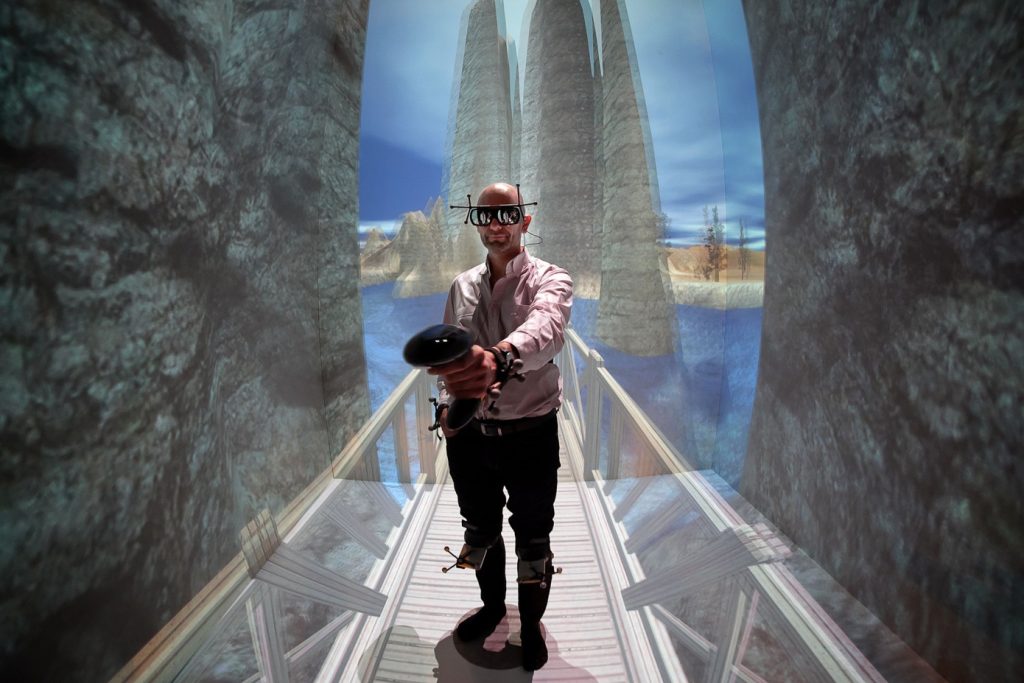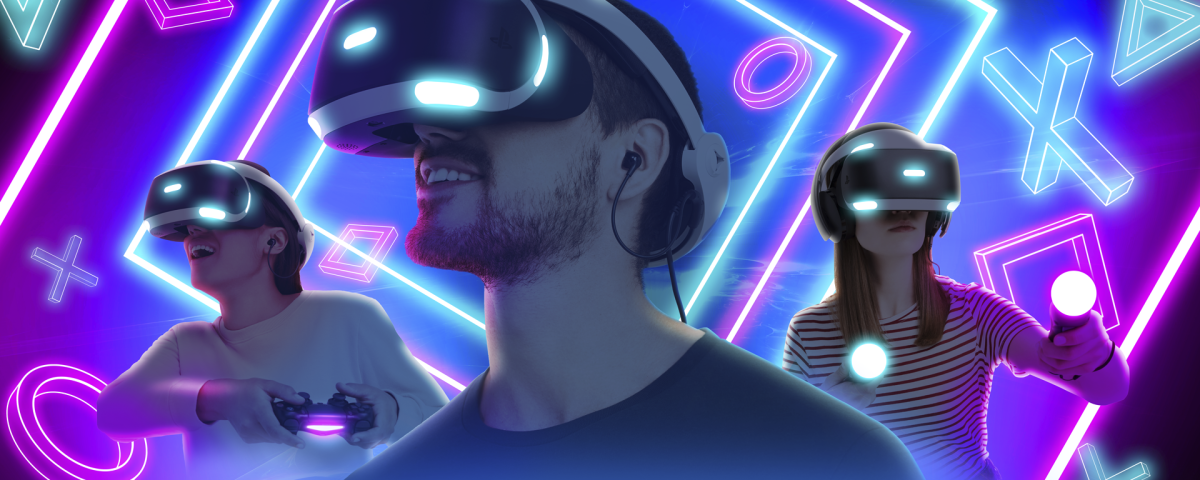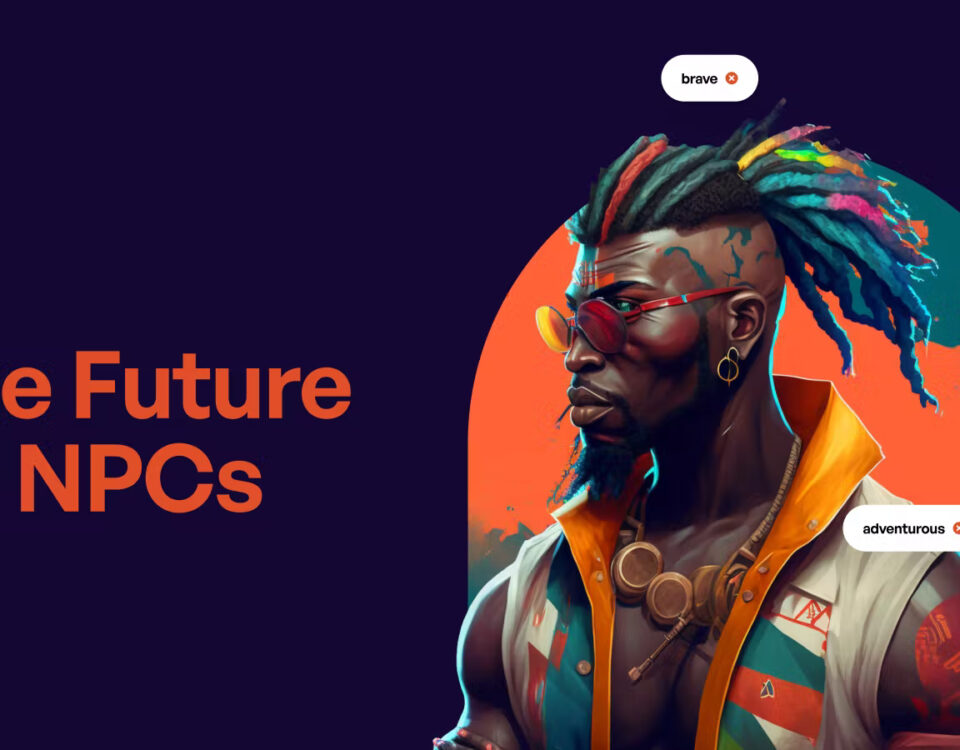Virtual Reality gaming (VR gaming)

RETHINKDB: THE REAL-TIME DATABASE FOR THE WEB
23rd November 2021
What Does “Defensive Programming” Mean?
27th November 2021Virtual reality gaming is the application of a three-dimensional (3-D) artificial environment to computer games. Virtual reality environments are created with VR software and presented to the user in such a way that they supersede the real-world environment, creating suspension of disbelief and helping the user experience the VR environment as real.
At its simplest, a VR game might involve a 3-D image that can be explored interactively on a computing device by manipulating keys, mouse or touchscreen. More sophisticated and immersive examples include VR headsets, wrap-around display screens and VR rooms augmented with wearable computers and sensory components, such as to scents and haptics devices for tactile feedback.
VR gaming has been dreamed about almost as long as video games — and especially 3D games — have existed. Prior to the development of compact technology, VR gaming used projector rooms or multiple screens. VR gaming control may involve a standard keyboard and mouse, game controllers or motion capture methods. More complex VR rooms may include treadmill floors or similar methods to further the user’s sense of freedom of movement and feelings of immersion within the virtual environment. In other VR gaming setups, the user may be confined to a limited area surrounding a computer but have a free range of motion within the area.
As technology progresses, virtual reality gaming hardware has matured to the point that VR headsets offer a great experience with little lag or nausea, two areas that had presented problems historically. Some VR headsets on the market include HTC Vive, Oculus Rift, Microsoft Hololens, Samsung VR, PlayStation VR and Google Cardboard. Most of these offer motion-sensing controllers and a tracker to work in concert with the headset. Some offer room-scale VR capabilities while others are designed to be used in a seated or stationary position. In addition to entertainment, VR games can be used for various types of training and for virtual reality therapy.
VR gaming is distinct from augmented reality gaming, which involves the integration of digital content with the user’s real-world environment. for more info contact us

Virtual reality devices are the next generation of computing, IDC says
BOSTON — When evaluating wearables, IT can’t leave out augmented and virtual reality devices, which are poised to have a major effect on the enterprise.
The wearables market overall will see profound growth over the next three years. It is projected to surpass $20 billion this year, and the market will grow to up to $54 billion in 2019, IDC analysts said here at this week’s IDC Directions conference.
Augmented reality (AR) and virtual reality (VR) headsets will be a key driver of wearables growth as major IT vendors invest in this area, IDC vice president Tom Mainelli said during a session. Those vendors include Canon, Samsung, Microsoft, Google, Intel, Facebook and Apple, he said.
“This is not a toy,” he added. “This is not something that is just cool to have. This is the next generation of computing.”
AR devices such as Google Glass and Microsoft HoloLens add digital information or objects to users’ lines of vision. Users can still see and hear everything in the real world, but the devices have see-through lenses that layer data and images onto them. Virtual reality devices such as the Samsung Gear VR completely replace users’ vision (and sometimes hearing) with the information they present on screens and in headsets.
There are many business use cases that companies are testing today, Mainelli said.
In hospitals, for example, doctors can use AR headsets to view data during surgeries or talk to patients while viewing their vital signs and other health information right in the lenses. In education, AR devices can allow students to learn more information about museum exhibits they’re viewing, and virtual reality devices can provide simulations that help with job training.
One of the biggest use cases is in manufacturing, where these devices can provide workers with step-by-step instructions or even blueprints for building something. Warehouse workers could use AR headsets to map out the quickest routes to locations where items are stored based on bar codes. Daqri, a software and hardware vendor in Los Angeles, has already developed a “smart hardhat,” a helmet with an augmented reality screen on the front that construction sites and oil rigs are piloting now.
“[AR and VR are] going to have as big an impact on business as the PC had,” Mainelli said. “It’s going to change the way we interact with technology. It’s going to happen across many businesses over time.”

Virtual reality in the enterprise
This year is already shaping up to be the year virtual reality (VR) goes mainstream. In January, Oculus Rift stole the spotlight at the annual Consumer Electronics Show in Las Vegas by (finally) announcing a $599 price and late Q1 ship date. HTC and Sony have also confirmed launch dates for their headsets in the first half of 2016, and Google announced they are staffing up their executive team for their new virtual reality unit.
But will virtual reality really take off? Will the products be affordable and fashionable enough for today’s consumers? Facebook, Sony, Google, HTC, Samsung and Apple sure think so. Even research firms like Juniper have estimated that three million VR devices will ship this year, and, if all continues to go well, that number could increase to 30 million by 2020.
While most people are excited about using VR headsets for immersive entertainment and gaming experiences, an entirely separate audience is busy building the future of business with the same technology — the enterprise.
While the enterprise might not be what you expected, what I find most exciting about the market opportunity is the prospect of transforming industries like medicine, education, manufacturing, engineering, real estate and more.
Instead of focusing on the endless possibilities of VR technology in the business world, it’s important to understand the current enterprise VR landscape and what already exists. Many different industries are leveraging the power of virtual reality; however, most of these amazing stories haven’t been broadly discussed to date.
Maybe that’s because VR medical training might not seem as glamorous as playing basketball with LeBron James on Samsung’s Gear VR headset, but I beg to differ — the impact is much more meaningful for the masses.
XpertLab – Web development Company in Junagadh
VR making today’s businesses smarter
Let’s take a look at some of the first industries making strides in using virtual reality to improve business.
Real estate. The real estate sector has never been known for embracing new technology, but that’s finally starting to change. Brokers and developers are using virtual reality tours to speed up leasing and sales. The analyst firm Wedbush Securities believes one of the reasons Facebook purchased Oculus VR last year for $2 billion is because of VR’s real estate potential.
Floored, Inc. is a company that provides VR software and 3D modelling programs to customers such as Sage Realty and Taconic Investment Partners. Floored’s software was recently used on an Oculus Rift headset to help Taconic market a six-story building in Manhattan before it was finished; now the tenant is Samsung Electronics.
XpertLab – Web development Company in Junagadh
Medicine. Although the medical world has been using advanced (and expensive) simulators and medical headsets for years, this is the first time in history when affordable VR devices are available. Just last month, a group of surgeons in Miami was able to perform open-heart surgery on a four-month-old baby thanks to VR imaging software and a Google Cardboard Viewer. One emerging software developer in this space is Next Galaxy.
They provide instructional content for healthcare professionals, as well as patients. Through devices like Google Cardboard and Oculus Rift, medical professionals will be able to practice everything from CPR to rare surgical procedures. Patients are able to learn about the procedures being performed on them so that they fully understand the operation and their recovery needs.
Manufacturing. Product teams all over the world are using VR to optimize product engineering, design, manufacturing and operations. Ford Motor Company currently uses Oculus development kits and HTC Vive headsets to design new vehicles, develop autonomous vehicle technologies and collaborate with teammates across the globe.
Ford’s immersive Vehicle Environment (FiVE) Lab team has seen a significant increase in productivity, as well as a huge drop in costs and time due to virtual testing and prototyping. At Ford, no vehicle can move forward in the production phase without first being virtually approved. The company supplying VR software to Ford is ESI, a leading provider in virtual prototyping. Some of their other customers include giant corporations like Boeing, Caterpillar and Lockheed Martin.
XpertLab – Web development Company in Junagadh
These companies use ESI’s virtual reality solution IC.IDO in a number of ways, including performing collaborative and immersive design reviews, verifying resources and tooling for maintenance. Instead of spending several hundreds of thousands on building a physical prototype, manufacturers like Caterpillar now have VR labs where they can virtually test new designs.
Endless possibilities
Although virtual reality in the enterprise may not scale as quickly as it will in the gaming world, I still expect significant inroads — especially in the industries mentioned above, as well as in retail, travel, security, interior design, oil and gas and transportation. Before all of these industries start deploying VR headsets to workers, we’re going to need growth in enterprise VR software and content development.
Imagine virtual training and certification programs for everyone from sales reps to aerospace engineers. There also will be a whole new wave of virtual meeting and collaboration tools that not only empower remote workers but save on travel and training costs. The possibilities of VR in the enterprise are endless, and I can’t wait to see the ways it will reshape business as we know it.
Logo Designing Company in Junagadh




